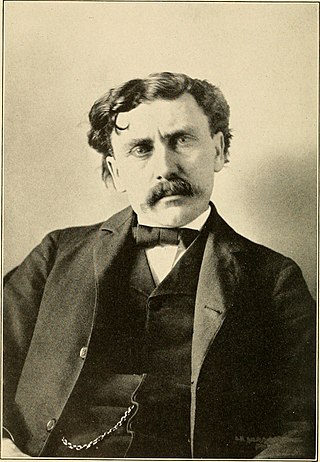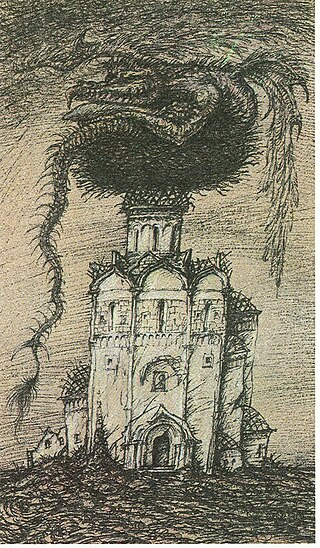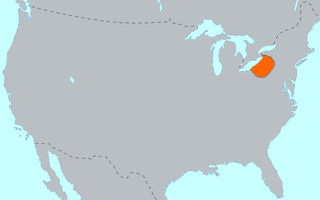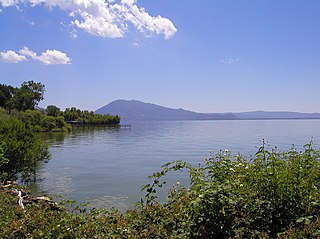Related Research Articles

A dragon is a magical legendary creature that appears in the folklore of multiple cultures worldwide. Beliefs about dragons vary considerably through regions, but dragons in Western cultures since the High Middle Ages have often been depicted as winged, horned, and capable of breathing fire. Dragons in eastern cultures are usually depicted as wingless, four-legged, serpentine creatures with above-average intelligence. Commonalities between dragons' traits are often a hybridization of reptilian, mammalian, and avian features.

Cherokee spiritual beliefs are held in common among the Cherokee people – Native American peoples who are Indigenous to the Southeastern Woodlands, and today live primarily in communities in North Carolina, and Oklahoma. Some of the beliefs, and the stories and songs in which they have been preserved, exist in slightly different forms in the different communities in which they have been preserved. But for the most part, they still form a unified system of theology.
Seneca mythology refers to the mythology of the Onödowáʼga:, one of the six nations of the Haudenosaunee from the northeastern United States and Canada.

The Indigenous peoples of the Americas comprise numerous different cultures. Each has its own mythologies, many of which share certain themes across cultural boundaries. In North American mythologies, common themes include a close relation to nature and animals as well as belief in a Great Spirit that is conceived of in various ways. As anthropologists note, their great creation myths and sacred oral tradition in whole are comparable to the Christian Bible and scriptures of other major religions.

James Mooney was an American ethnographer who lived for several years among the Cherokee. Known as "The Indian Man", he conducted major studies of Southeastern Indians, as well as of tribes on the Great Plains. He did ethnographic studies of the Ghost Dance, a spiritual movement among various Native American culture groups, after Sitting Bull's death in 1890. His works on the Cherokee include The Sacred Formulas of the Cherokees (1891), and Myths of the Cherokee (1900). All were published by the US Bureau of American Ethnology, within the Smithsonian Institution.

Among the Haudenosaunee the Great Law of Peace, also known as Gayanashagowa, is the oral constitution of the Iroquois Confederacy. The law was represented by symbols on wampum belts which functioned as mnemonic devices for storytellers, conceived by Dekanawidah, known as the Great Peacemaker, and his spokesman Hiawatha. The original five member nations ratified this constitution near modern-day Victor, New York, with the sixth nation being added in 1722.

John Reed Swanton was an American anthropologist, folklorist, and linguist who worked with Native American peoples throughout the United States. Swanton achieved recognition in the fields of ethnology and ethnohistory. He is particularly noted for his work with indigenous peoples of the Southeast and Pacific Northwest.

A Slavic dragon is any dragon in Slavic mythology, including the Russian zmei, Ukrainian zmiy, and its counterparts in other Slavic cultures

Raven Tales are the traditional human and animal creation stories of the indigenous peoples of the Pacific Northwest Coast. They are also found among Athabaskan-speaking peoples and others. Raven stories exist in nearly all of the First Nations throughout the region but are most prominent in the tales of the Haida, Tsimshian, Tlingit and Tahltan people.

The Erie people were an Indigenous people of the Northeastern Woodlands historically living on the south shore of Lake Erie. An Iroquoian-speaking tribe, they lived in what is now western New York, northwestern Pennsylvania, and northern Ohio before 1658. Their nation was almost exterminated in the mid-17th century by five years of prolonged warfare with the powerful neighboring Iroquois for helping the Huron in the Beaver Wars for control of the fur trade. Captured survivors were adopted or enslaved by the Iroquois.

The Lake Miwok are a branch of the Miwok, a Native American people of Northern California. The Lake Miwok lived in the Clear Lake basin of what is now called Lake County. While they did not have an overarching name for themselves, the Lake Miwok word for people, Hotsa-ho, was suggested by A. L. Kroeber as a possible endonym, keeping with a common practice among tribal groups and the ethnographers studying them in the early 20th Century and with the term Miwok itself, which is the Central Sierra Miwok word for people.
Eel River Athapaskan traditional narratives include myths, legends, tales, and oral histories.
Modoc traditional narratives include myths, legends, tales, and oral histories preserved by the Modoc and Klamath people of northern California and southern Oregon.
Northern Paiute traditional narratives include myths, legends, tales, and oral histories preserved by the Northern Paiute people of the Great Basin deserts of western Nevada, eastern California, and southeastern Oregon in the United States of America.
The haietlik is a lightning spirit and legendary creature in the mythology of the Nuu-chah-nulth (Nootka) people of the Canadian Pacific Northwest Coast. According to legend, the haietlik is both an ally and a weapon of the thunderbirds, employed by them in the hunting of whales. They are described as huge serpents with heads as sharp as a knife and tongues that shoot lightning bolts. A blow from a haietlik injures a whale enough that the hunting thunderbird can carry it away as prey. The haietlik is variously described as dwelling among the feathers of the thunderbirds to be unleashed with a flap of the wings, or inhabiting the inland coastal waters and lakes frequented by the Nuu-chah-nulth people.
Truman Michelson was a linguist and anthropologist who worked from 1910 until his death for the Bureau of American Ethnology at the Smithsonian Institution. He also held a position as ethnologist at George Washington University from 1917 until 1932.

Erminnie A. Smith, néeErminnie Adelle Platt was a linguist, ethnologist, anthropologist and geologist who worked at the Smithsonian Institution's Bureau of American Ethnology. She has been called the "first woman field ethnographer" and was the first female member elected to the New York Academy of Sciences on November 5, 1877.
In Seneca mythology, Djieien is a monstrous spider six feet tall. It could not be killed because it had hidden its heart underground. The great hero Othegwenhda (Hiawatha) discovered Dijien's heart and so killed it.
Hoyau or hoyau kamui, in Ainu mythology, is a type of malodorous and venomous dragon or dragon god, believed to thrive in summer or near fire, but lose strength in the cold, whose trait earns it the alternative name of sak-somo-ayep.
Simeon Gibson was a member of the Cayuga tribe and the Onondaga Longhouse on the Six Nations Reserve. Gibson (Iroquois) worked closely with Iroquois researchers, including Horatio Hale, David Boyle, Mark Raymond Harrington, A.C. Parker, and John Napoleon Brinton (J.N.B.) Hewitt. Gibson worked with these researchers to interpret his father Chief Gibson’s two records of the Daganawi:dah legend.
References
- ↑ "Sea Serpents of Canada" Archived 2011-07-13 at the Wayback Machine , Charles Alexander Moffat.
- ↑ The Serene Dragon Archived 2007-01-04 at the Wayback Machine .
- ↑ Darek Isaacs (2010). Dragons Or Dinosaurs?: Creation Or Evolution?. Bridge Logos Foundation. p. 121. ISBN 9780882704777 . Retrieved 30 May 2011.
- ↑ Ash Dekirk (2006). Dragonlore: From the Archives of the Grey School of Wizardry. Career Press. p. 48. ISBN 9781564148681 . Retrieved 30 May 2011.
- ↑ Walker, Deward E. (1989). Witchcraft and Sorcery of the American Native Peoples. Moscow, Idaho: University of Idaho Press. p. 157. ISBN 978-0893011277.
- ↑ Curtin, Jeremiah; Hewitt, J.N.B. (1918). Annual Report, Volume 32. Smithsonian Institution. Bureau of American Ethnology. pp. 236~251. Retrieved Dec 21, 2019.